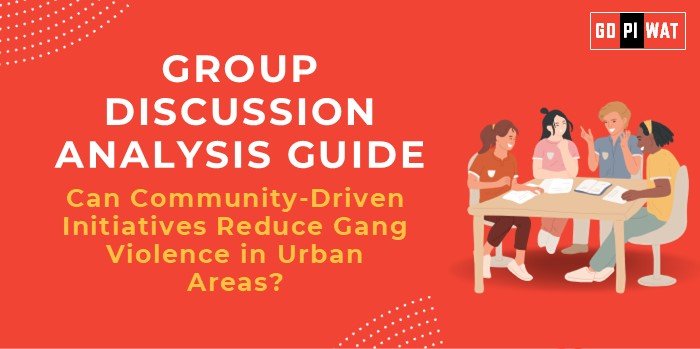📋 Can Community-Driven Initiatives Reduce Gang Violence in Urban Areas?
🌐 Introduction to the Topic
Opening Context: “Urban gang violence remains a pressing issue, contributing to social instability, economic losses, and fear in affected communities. Community-driven initiatives are increasingly seen as sustainable alternatives to traditional enforcement methods.”
Topic Background: Gang violence stems from socio-economic inequalities, lack of education, and limited opportunities. In cities like Los Angeles, Medellín, and Cape Town, community-led initiatives have shown promise in addressing the root causes through education, employment, and mentorship programs.
📊 Quick Facts and Key Statistics
- 💰 Global Cost of Violence: Estimated at 10.4% of global GDP (World Economic Forum).
- 📉 Recidivism Rates: Drop by 30% in neighborhoods with active mentorship programs (Urban Safety Report 2023).
- 💼 Job Placement Success: 60% of youth in violence prevention programs secure employment within a year (UNODC 2022).
- 🎓 Education Dropout Rates: Reduced by 25% in areas with after-school programs.
👥 Stakeholders and Their Roles
- 🏛️ Local Governments: Provide funding, policy support, and infrastructural resources.
- 📢 Community Leaders and NGOs: Develop and implement grassroots programs.
- 👮 Police and Security Agencies: Support prevention efforts through reduced aggressive policing.
- 👨👩👧👦 Youth and Families: Direct beneficiaries and active participants in shaping programs.
- 🌍 International Organizations: Offer expertise, grants, and advocacy platforms.
📚 Achievements and Challenges
Achievements:
- ✨ Reduced Violence Rates: Medellín’s homicide rates dropped by 95% (1990–2020) due to community-focused strategies.
- 💡 Youth Engagement: Cape Town’s “CeaseFire” initiative recorded a 48% reduction in gang-related shootings.
- 💼 Economic Empowerment: Job training in East LA led to a 40% gang exit rate.
Challenges:
- 💰 Funding Gaps: Community programs often face inconsistent financial support.
- 🌍 Cultural Barriers: Resistance from gangs entrenched in identity and territorial conflicts.
- 📋 Global Comparison: Cities like Oslo with low violence show limited relevance to high-risk urban zones.
Case Studies:
- 🇨🇴 Medellín, Colombia: Integrated education and mobility projects.
- 🇺🇸 Los Angeles, USA: “Homeboy Industries” provides jobs to former gang members.
🗨️ Structured Arguments for Discussion
- ✅ Supporting Stance: “Community-driven initiatives address the socio-economic roots of gang violence, leading to long-term reductions.”
- ❌ Opposing Stance: “Such programs cannot scale effectively in high-conflict zones without strong institutional support.”
- ⚖️ Balanced Perspective: “While community-driven efforts show promise, they need government and private-sector partnerships for sustainability.”
🌟 Effective Discussion Approaches
- 💡 Opening Approaches:
- 📊 Statistical Impact: “Gang violence costs the U.S. over $100 billion annually, highlighting the need for alternative approaches.”
- ⚖️ Contrast Method: “While enforcement strategies focus on suppression, community initiatives target prevention.”
- 💬 Counter-Argument Handling:
- “Programs fail without funding? Partnership with private entities can secure sustainability.”
- “Cultural barriers? Role models from within the community can break stereotypes.”
📈 Strategic Analysis of Strengths and Weaknesses
- ✅ Strengths: Long-term impact, builds trust, holistic solutions.
- ⚠️ Weaknesses: High dependency on funding, limited scalability.
- 🌟 Opportunities: Corporate partnerships, tech integration (apps for youth outreach).
- ⚡ Threats: Gang retaliation, political instability.
🎓 Connecting with B-School Applications
- 🌍 Real-World Applications: CSR projects, urban development programs, and public-private partnerships.
- 💬 Sample Interview Questions:
- “How can mentorship reduce gang violence?”
- “Discuss the scalability of community-led initiatives in cities with varied socio-economic conditions.”
- 📘 Insights for Students:
- Explore leadership opportunities in non-profits.
- Develop frameworks for conflict resolution.


